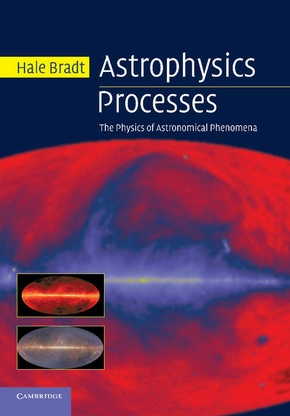Astrophysics Processes - The Physics of Astronomical Phenomena
| Verlag | Cambridge University Press |
| Auflage | 2014 |
| Seiten | 534 |
| Format | 17,0 x 24,4 x 2,7 cm |
| Gewicht | 840 g |
| Artikeltyp | Englisches Buch |
| EAN | 9781107677241 |
| Bestell-Nr | 10767724UA |
This book bridges the gap between physics and astronomy texts for undergraduate and graduate students.
Bridging the gap between physics and astronomy textbooks, this book provides step-by-step physical and mathematical development of fundamental astrophysical processes underlying a wide range of phenomena in stellar, galactic, and extragalactic astronomy. The book has been written for upper-level undergraduates and beginning graduate students, and its strong pedagogy ensures solid mastery of each process and application. It contains over 150 tutorial figures, numerous examples of astronomical measurements, and 201 exercises. Topics covered include the Kepler-Newton problem, stellar structure, binary evolution, radiation processes, special relativity in astronomy, radio propagation in the interstellar medium, and gravitational lensing. Applications presented include Jeans length, Eddington luminosity, the cooling of the cosmic microwave background (CMB), the Sunyaev-Zeldovich effect, Doppler boosting in jets, and determinations of the Hubble constant. This text is a stepping stone t o more specialized books and primary literature. Password-protected solutions to the exercises are available to instructors at www.cambridge.org/9780521846561.
Inhaltsverzeichnis:
Preface; 1. Kepler, Newton, and the mass function; 2. Equilibrium in stars; 3. Equations of state; 4. Stellar structure and evolution; 5. Thermal bremsstrahlung radiation; 6. Blackbody radiation; 7. Special theory of relativity in astronomy; 8. Synchrotron radiation; 9. Compton scattering; 10. Hydrogen spin-flip radiation; 11. Dispersion and Faraday rotation; 12. Gravitational lensing; References; Acronyms; Appendix; Index.
Rezension:
'The author's engaging writing style makes this a very enjoyable book. Each topic starts with interesting observational material, then goes to a discussion of the physical concepts, amplified by mathematics, and very good figures, and then ties it up by finishing with more observational applications, either solving the problem posed at the beginning of the chapter or presenting new ones. This is a perfect book for seniors.' Marc L. Kutner, author of Astronomy: A Physical Perspective

